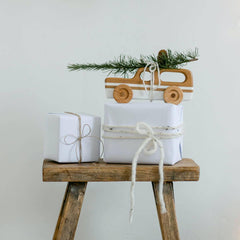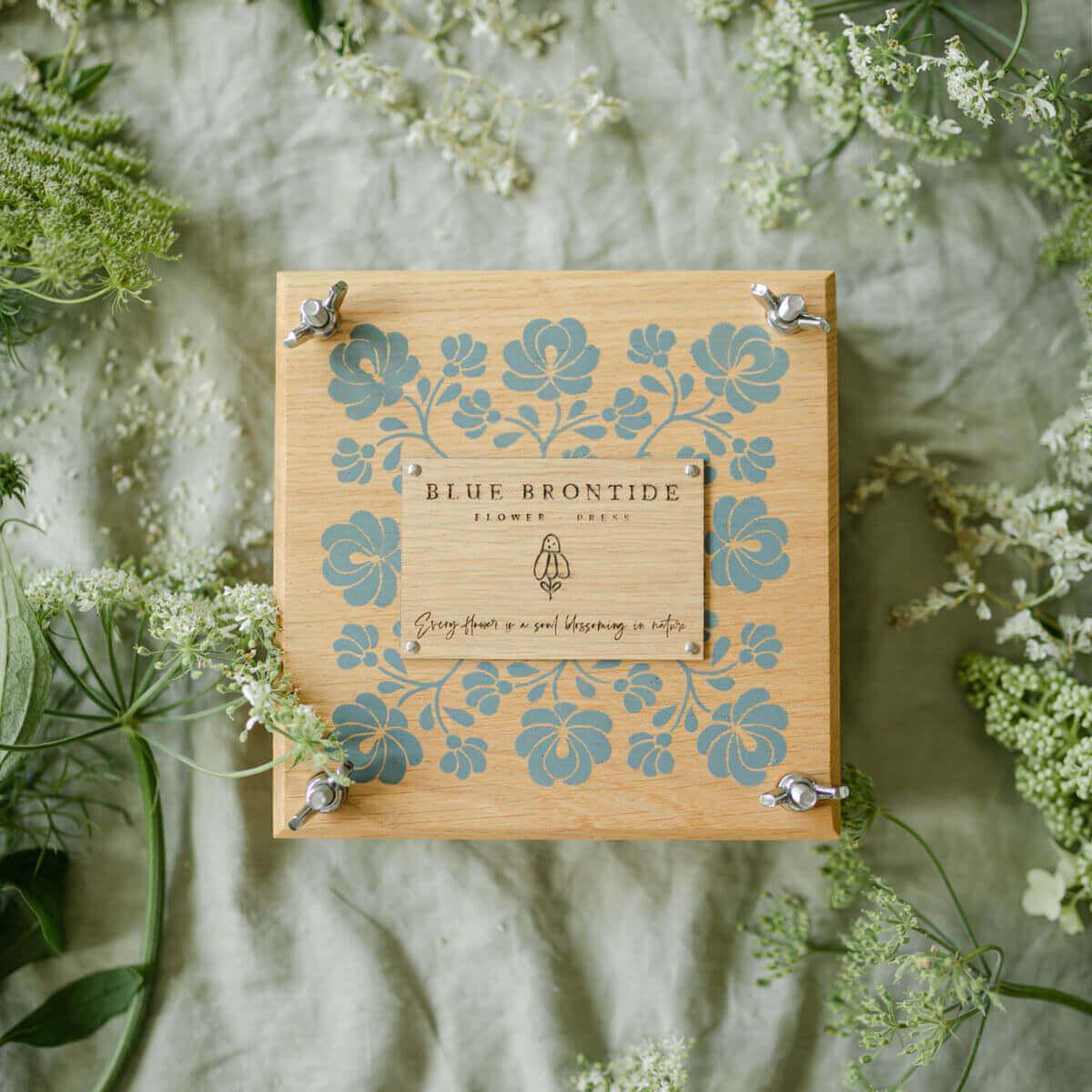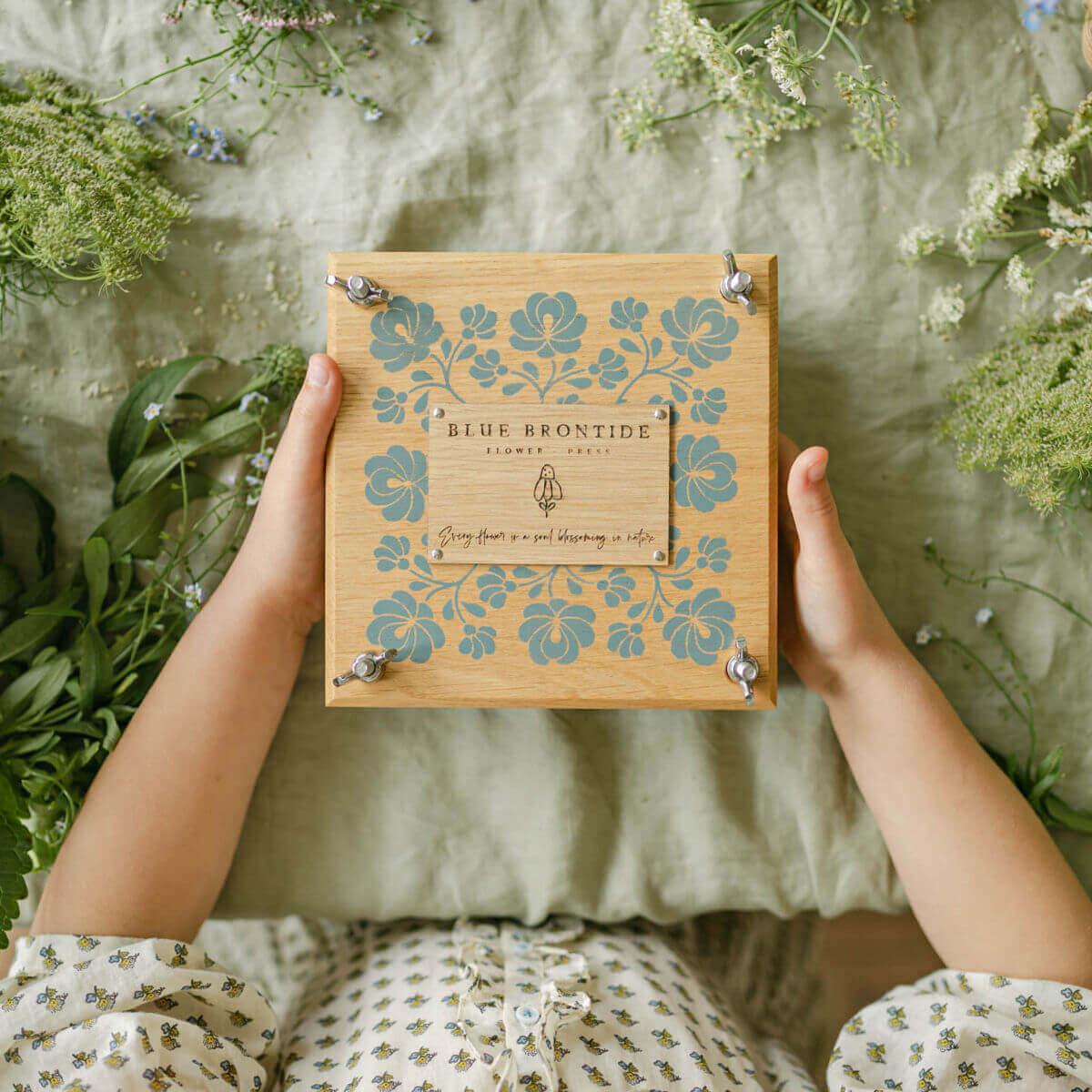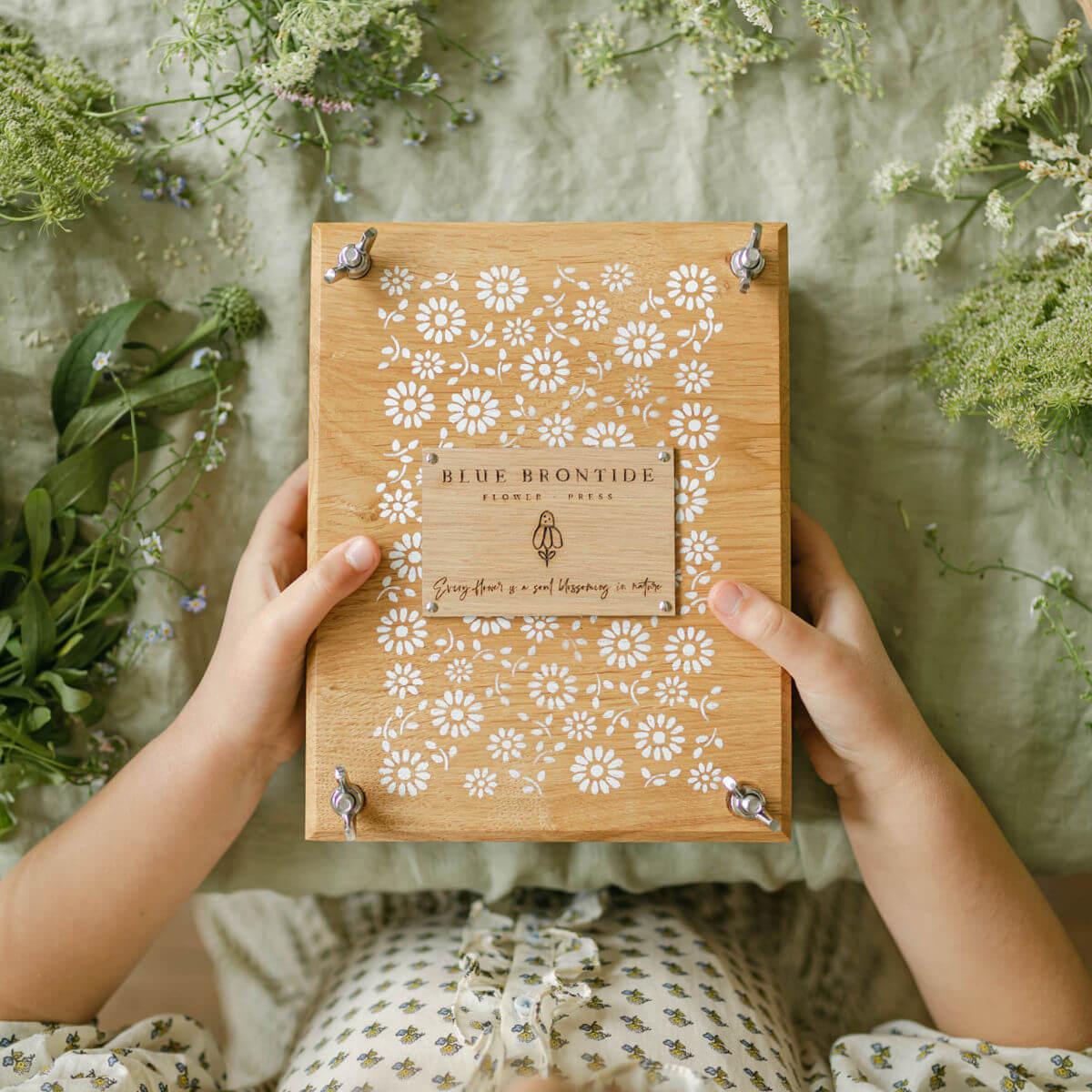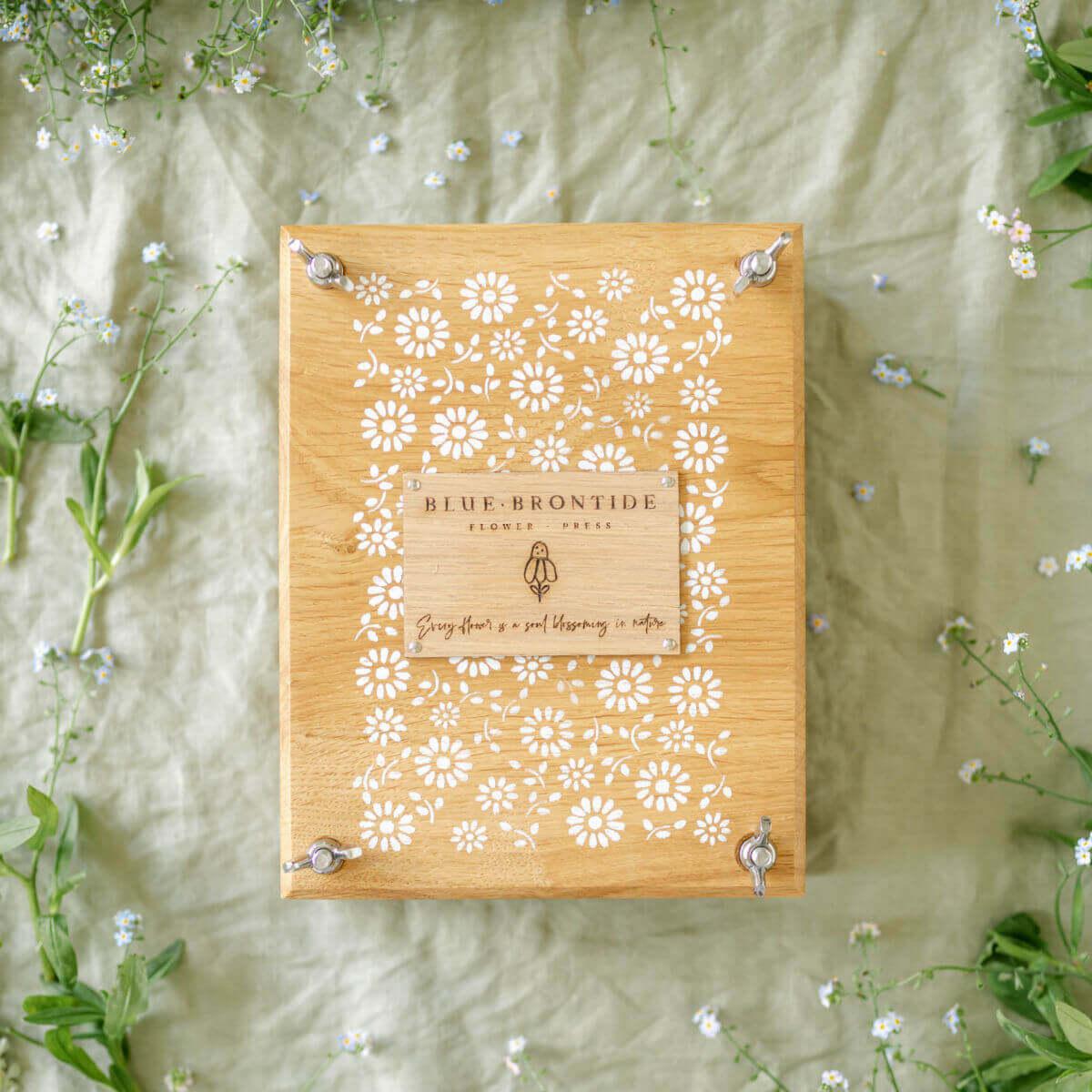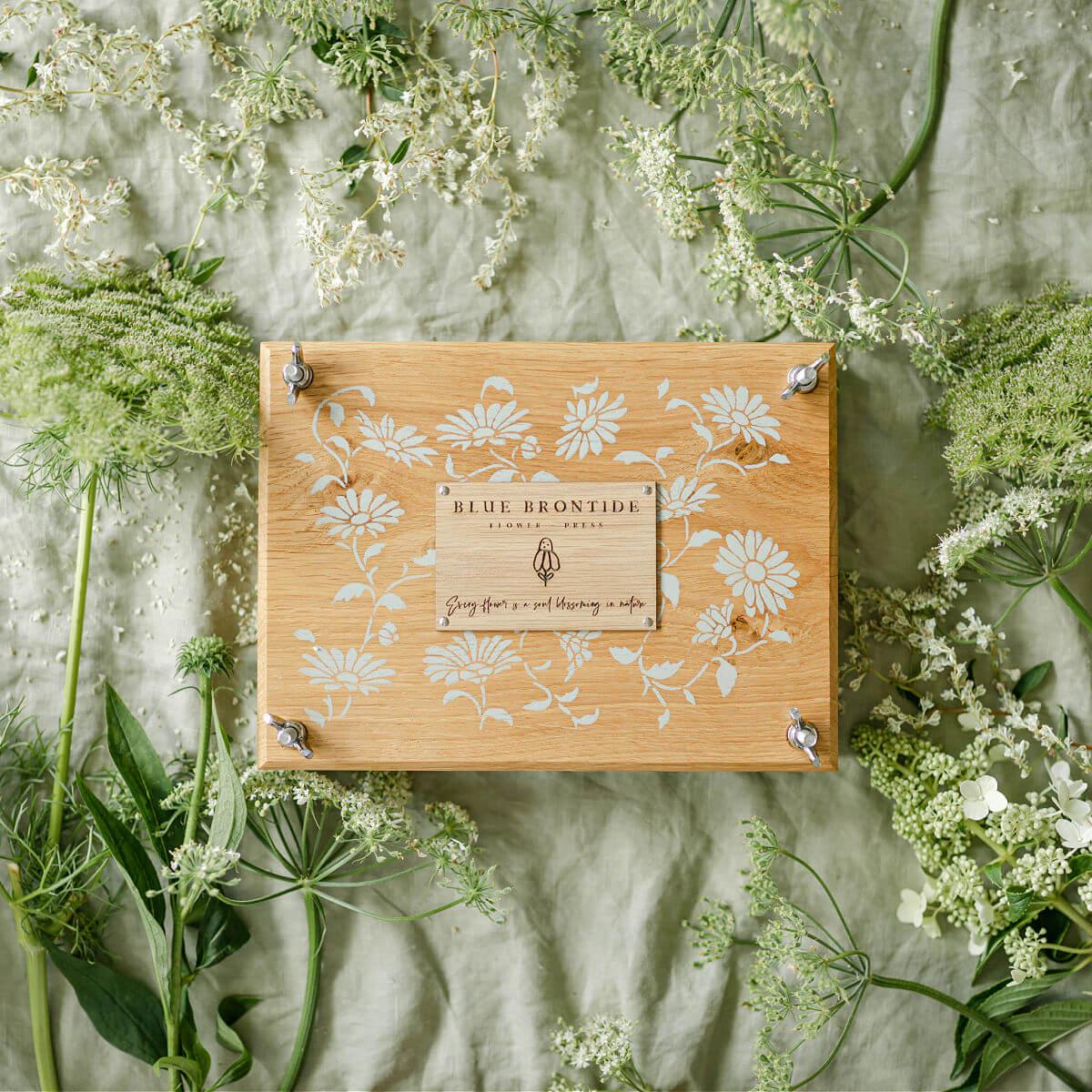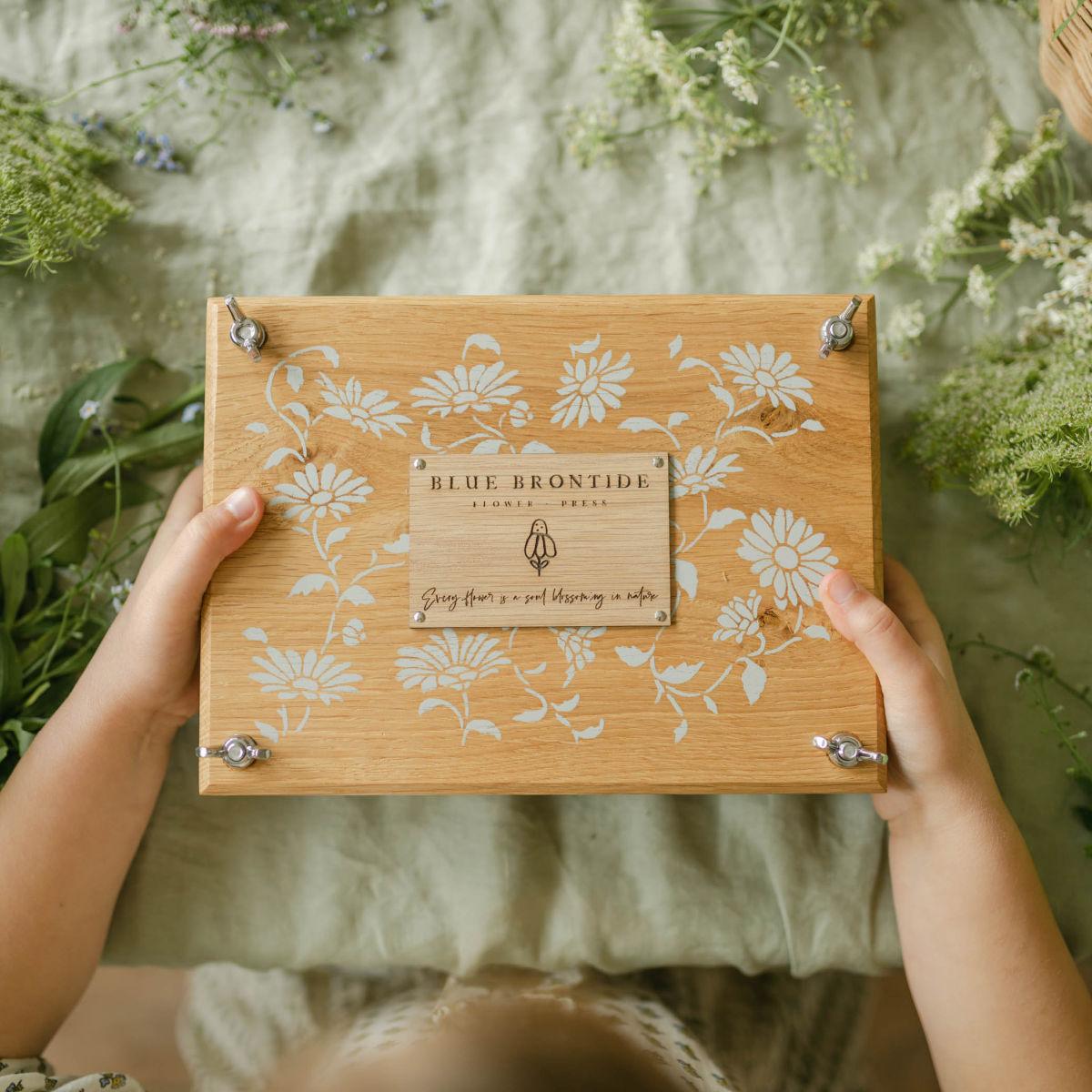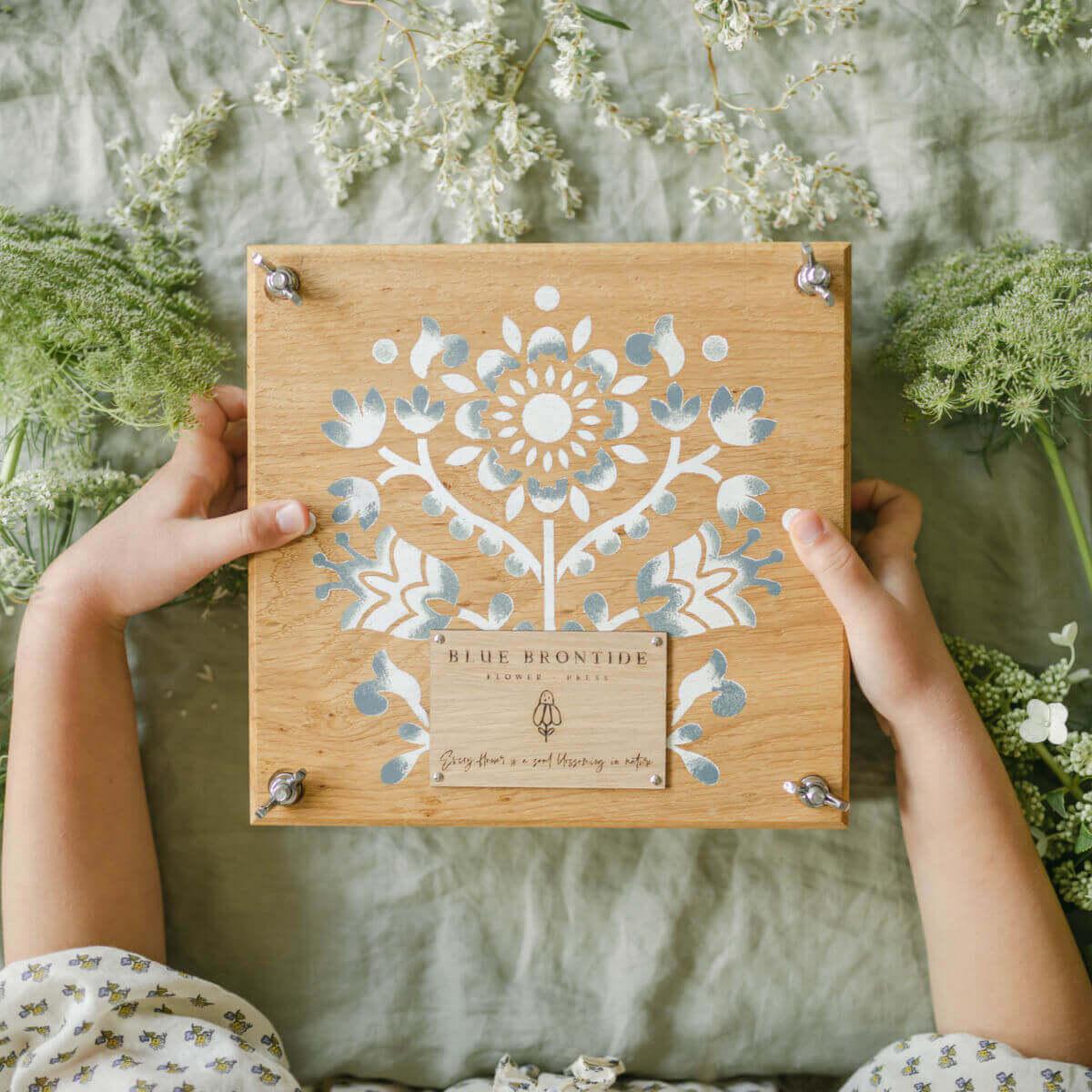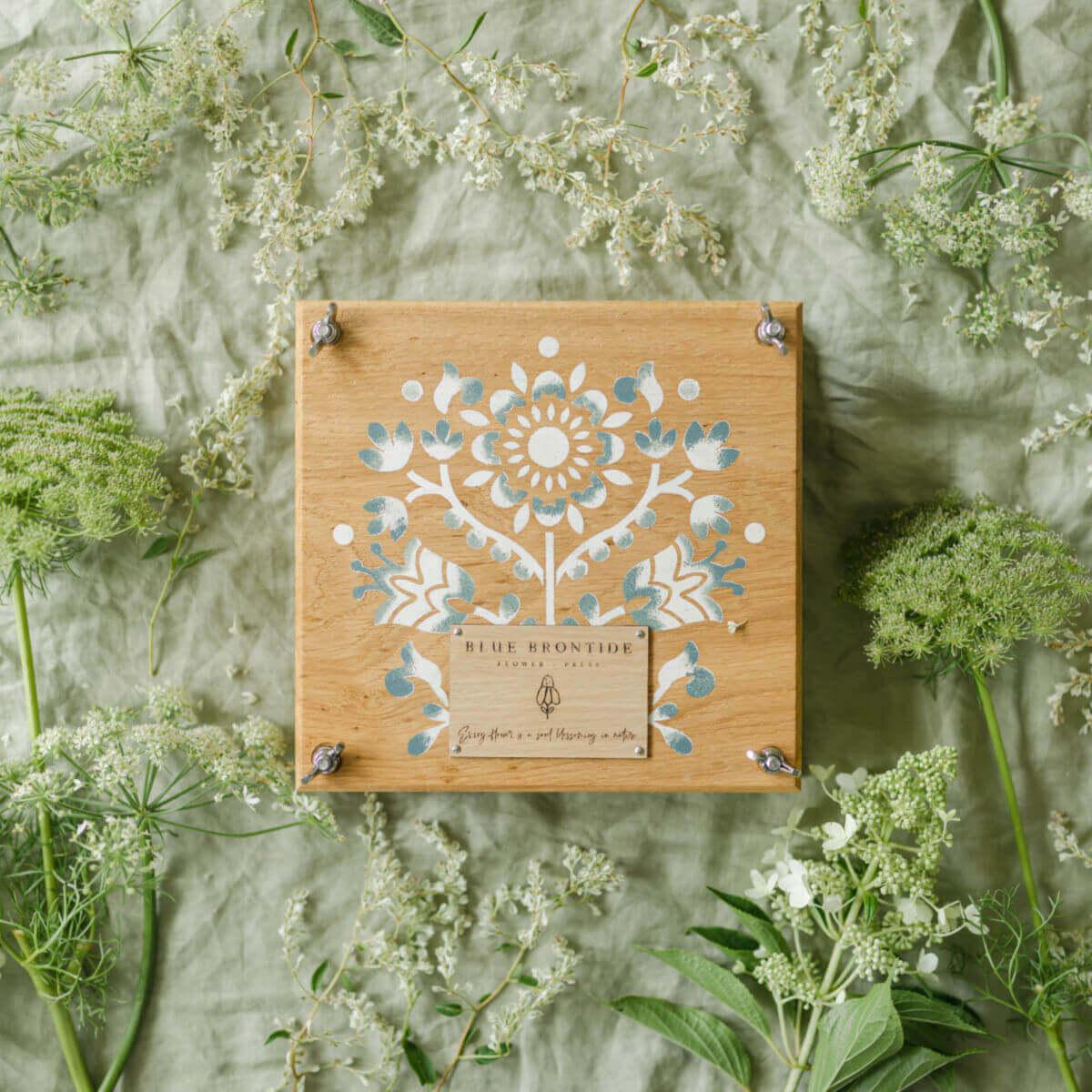From vibrant daisies to delicate roses, the art of pressing flowers has been cherished for generations. If you're an avid flower lover residing in the UK, you're in for a treat! In this comprehensive guide, we will unveil the best flowers for pressing, ensuring that your pressed botanical collection is nothing short of exquisite.
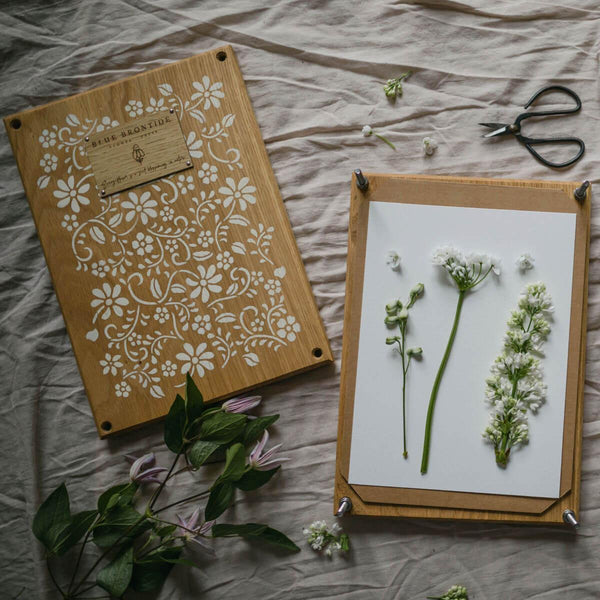
Wooden Flower Press - Large by Blue Brontide
When it comes to pressing flowers, choosing the right blooms is vital. Each flower has its own unique qualities that can enhance the final result. Whether you're a seasoned enthusiast or a beginner, this article will equip you with the knowledge you need to create stunning pressed flower arrangements. In the UK, the climate and diverse landscape offer an abundance of floral treasures. From the elegant bluebells of the English countryside to the vibrant daffodils that herald the arrival of spring, there is a wide variety of flowers to choose from.
We will delve into the characteristics and pressing techniques of some of the most popular flowers found across the UK. Get ready to embark on a journey through the enchanting world of pressed flowers. Discover the best blooms to press in the UK and unlock the secrets to creating breathtaking botanical masterpieces.
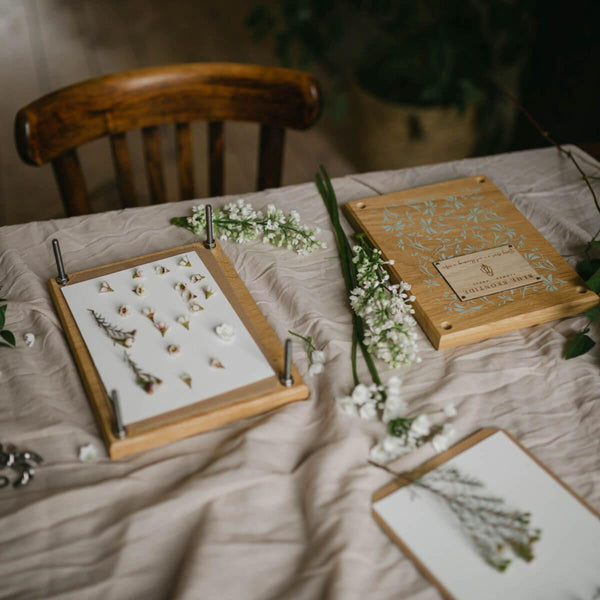
Wooden Flower Press Kit - Medium by Blue Brontide
1. English Rose
2. Bluebells
One of the most iconic flowers of the UK countryside, bluebells are a stunning sight to behold. With their vibrant blue-purple hues and delicate bell-shaped flowers, these Spring staples make a beautiful addition to any pressed flower project. To press bluebells, begin by selecting those that are in full bloom and free of any damage or blemishes. Using a flower press, carefully place the bluebells face down, making sure that the flowers are spread out evenly. Once the bluebells are pressed, they can be used to create a variety of projects, from bookmarks to framed art.
3. Daffodils
Known for their bright yellow petals and trumpet-shaped flowers, daffodils are a popular choice for springtime pressing and preservation. When selecting daffodils to press, look for those that are in full bloom, with petals that are fully open and free of any damage or blemishes. Using a flower press, carefully place the daffodils face down, making sure that the flowers are spread out evenly. Once the daffodils are pressed, they can be used to create a variety of projects, from greeting cards to home decor.
4. Lavender
5. Buttercups
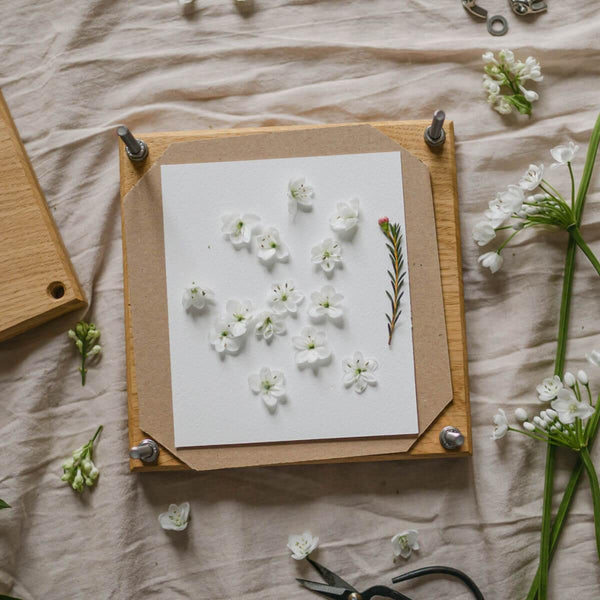
Wooden Flower Press Kit - Small by Blue Brontide
6. Forget-Me-Not
Forget-Me-Nots are delicate and dainty flowers that press beautifully. They are known for their small, five-petaled blue flowers, but they also come in pink and white varieties. Commonly found in woodlands, hedgerows and verges they flower between April and June.Their dainty blue petals create a beautiful contrast against a white background, perfect for adding a touch of elegance to any pressed flower project making them a favourite among flower pressers.
7. Pansy
Pansies come in a wide range of colours including purple, yellow, orange, and white, allowing for endless creative possibilities and have unique, symmetrical petals that make them ideal for pressing. Flowering from May to September you can find wild pansies growing throughout Britain in short grassland and field margins. Their vibrant hues and intricate patterns add a touch of elegance to any pressed flower project allowing for endless creative possibilities.
8. Cornflower
Cornflowers, also known as Bachelor's Buttons, have vibrant blue petals that retain their colour even after pressing. Flowering from June to August you could once find wild cornflower growing in arable fields but now its a rare sight and are classed as endangered in the UK, if you come across these beautiful flowers please leave them as they for the bees and butterflies to enjoy. We recommend growing your own in the garden or pot, these seeds are cheap and easy to grow giving you lots of beautiful blue flowers to press. Cornflowers have a unique shape with multiple layers of petals, making them visually interesting when pressed. These hardy flowers are easy to press and can add a pop of colour to any pressed flower arrangement.
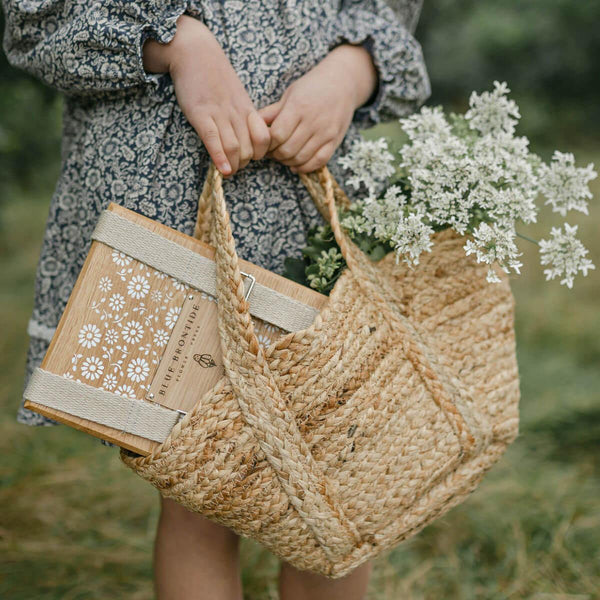 Wooden Flower Press with Straps - Delicate Daisy
Wooden Flower Press with Straps - Delicate Daisy
9. Daisy
Daisies are simple yet charming flowers that grow abundantly in even the poorest of soil, you won't have to look hard to find plenty for pressing. Their white petals and yellow centres create a classic pressed flower look that can be used in various crafts, such as greeting cards and bookmarks.
10. Sweet Pea
Sweet Peas are known for their fragrant blooms and delicate petals. These flowers come in a variety of colours, including beautiful soft pastel shades, making them a popular choice for pressed flower art. Rare in the wild (so if you're lucky to find one please do leave for the bees) but easy to grow in the garden or a pot.These delightful little blooms are like a fragrant hug for your soul! Embrace their delicate petals in a rainbow of pastel shades, perfect for adding a touch of whimsy to your pressed flower creations.
11. Marigolds
Marigolds are hardy flowers that are perfect for pressing. They come in various shades of orange and yellow, adding a warm and vibrant touch to any pressed flower project. You can find the UK native marsh marigolds growing abundantly near ponds, marshes, damp meadows, ditches and wet woodland.Marigolds are also known for their long-lasting blooms, making them a great choice for preserving the beauty of summer in pressed flower form.
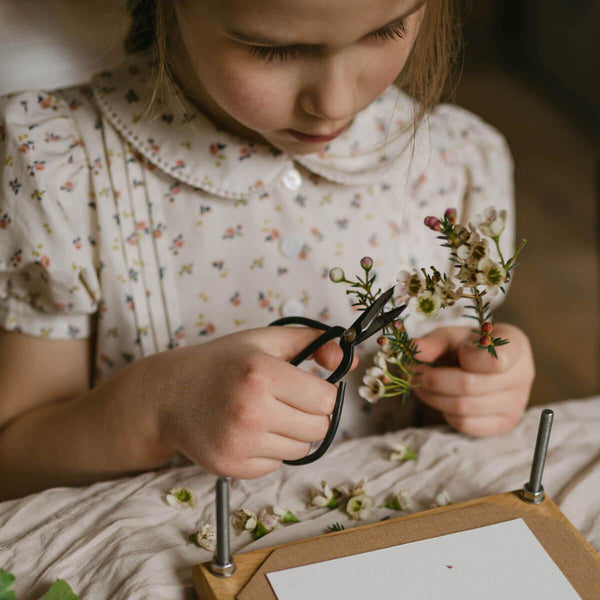
Wooden Flower Press Kit - Square
Preserving pressed flowers is key to their longevity and ensuring that they retain their colour and shape. Here are some tips to help you ensure that your pressed flowers remain beautiful and vibrant for years to come:
1. Choose blooms that are fresh and in good condition: It's also recommended to press flowers that are relatively flat and have thin petals, as they will dry more easily and retain their shape better.
2. Handle with care: Pressed flowers are delicate, so handle them with care to avoid damaging their petals. Use tweezers or a soft brush to gently lift and position the flowers as needed.
3. Avoid direct sunlight: Exposure to direct sunlight can cause pressed flowers to fade over time. Display them in areas away from direct sunlight to ensure their colours remain vibrant.
4. Use UV-protective glass: If you plan to frame your pressed flowers, opt for UV-protective glass. This helps filter out harmful UV rays, preventing the flowers from fading prematurely.
5. Be mindful of humidity: Pressed flowers are susceptible to moisture, which can cause them to become discoloured or mouldy. Store them in a dry environment and avoid displaying them in humid areas, such as bathrooms or kitchens.
6. Regularly dust the display: Dust can accumulate on pressed flowers over time, affecting their appearance. To keep them looking fresh, gently dust the display with a soft brush or compressed air.
With these best UK flowers for flower pressing, you can create beautiful and long-lasting pressed flower creations to enjoy for years to come.
In conclusion, there are numerous flowers in the UK that are perfect for pressing. Whether you prefer delicate daisies, vibrant roses, or fragrant lavender, there is a flower out there that will suit your pressing needs. So go out and explore the beauty of nature, and start creating your own pressed flower masterpieces.
Preserve Nature’s Poetry
Slow down and connect with nature through the simple joy of flower pressing. Our wooden presses offer a gentle way to explore botany, creativity, and the beauty of the seasons — one petal at a time.
Explore Wooden Flower Presses
